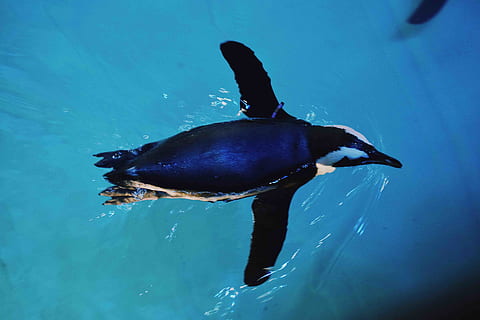Through a glass wall at Folly Farm’s zoo today I observed penguins swimming underwater. It was lovely to watch their streamlined bodies as they dived down and darted through the water, adding more propulsion with a quick flip of both wings.
These penguins were spending most of their time moving effortlessly forward underwater, quickly breaking the surface for air after about 20 to 30 seconds before diving down again.
Swimming underwater, like a penguin, is the way humans move naturally, efficiently and easily, and feel most relaxed. And it often takes just a few lessons to learn how to do it.
Observing a creature like a penguin that truly belongs in the water is a refreshing change from watching skillful human swimmers. Both are inspiring examples but a critical difference is that the human swimmers we most admire and want to emulate are following the form of conventional “strokes”. The mechanical frequency of moving the face out of the water to inhale restricts our freedom. We haven’t evolved to swim like this, we learn to do it.
Humans have been swimming underwater like penguins, fishing, for thousands of years. We’ve been swimming strokes, near the surface, centred on getting frequent inbreaths, enabling us to swim significant distances, for not much longer than a hundred.
If you watch a penguin swimming then visualise yourself doing front crawl or breaststroke, organising your strokes around a “breathing position”, it can be a bit of an eye opener.
Get away from the “strokes”, follow the penguin, and you’ll instantly feel more natural in the water. If you’re not yet able to swim underwater, you’ll be surprised at how quickly this ability can be gained.
Learning the strokes, focusing on coming up for air, can feel like too much hard work. But once you’re comfortable with your face in the water, you’ll be swimming underwater before you know it.
The penguins I watched today were in a man made swimming pool. It didn’t stop them being natural in water and it needn’t stop us.


